Jaden Jeong
FSL Year 2 Research
Abstract
While studies show demand for solar energy is rising, non-renewable energy sources such as batteries are still dominant in today’s market. With a mere efficiency and capacity factor of 15% on top of arising questions regarding their economic viability, it is unclear if solar panels perform well in voltage production. In this experiment, two fans were built, each running on either solar panels or batteries and they were tested on voltage production and whether the fans ran or not in an effort to compare the energy sources. The results indicate that solar energy has similar voltage production as batteries but has yet to match their reliability. However, due to the multitude of systematic and experimental errors leading up to this conclusion, further research is needed for a more proper, in-depth comparison of these two energy sources.
Introduction
Solar energy is the world’s cleanest and most abundant renewable energy source (SEIA, n.d.) and despite garnering considerable success in recent times (Mathiesen, 2016), it hasn’t been able to outcompete non-renewable energy sources (Mathiesen, 2016). Solar energy has significant limitations (Mathiesen, 2016) including a very low efficiency of 15% (energyhub.org, n.d.). In contrast, batteries, a non-renewable form of energy, have up to 99% efficiency (Battery University, n.d.). Moreover, solar energy has a 15% capacity factor or frequency of electricity production (Mathiesen, 2016). This is because solar panels require sunlight to generate electricity (Natural Resources Canada, 2017) and can do so only on clear, sunny days. Conversely, fossil fuels, another non-renewable energy source, have a capacity factor of 70-80% (Mathiesen, 2016). Likewise, batteries can produce electricity almost anytime until they use up all their chemicals (Bates, 2012).
All of these limitations of solar energy and solar panels are raising questions about their economic viability as opposed to non-renewable energy sources. However, there is no concrete evidence that they hinder its voltage production or power generation, an important aspect to consider in energy sources. After hearing this, one may begin to question if solar energy can potentially outperform batteries in voltage production and possibly be a more economically viable energy source despite significant limitations (efficiency, capacity factor). In this study, two fans were built with identical circuits with one running on batteries and the other running on solar panels. Voltage measurements were collected from both fans and they were also tested on whether or not they ran to compare the voltage production and reliability of the two energy sources. They were tested under various conditions and levels of power.
Materials and Methods
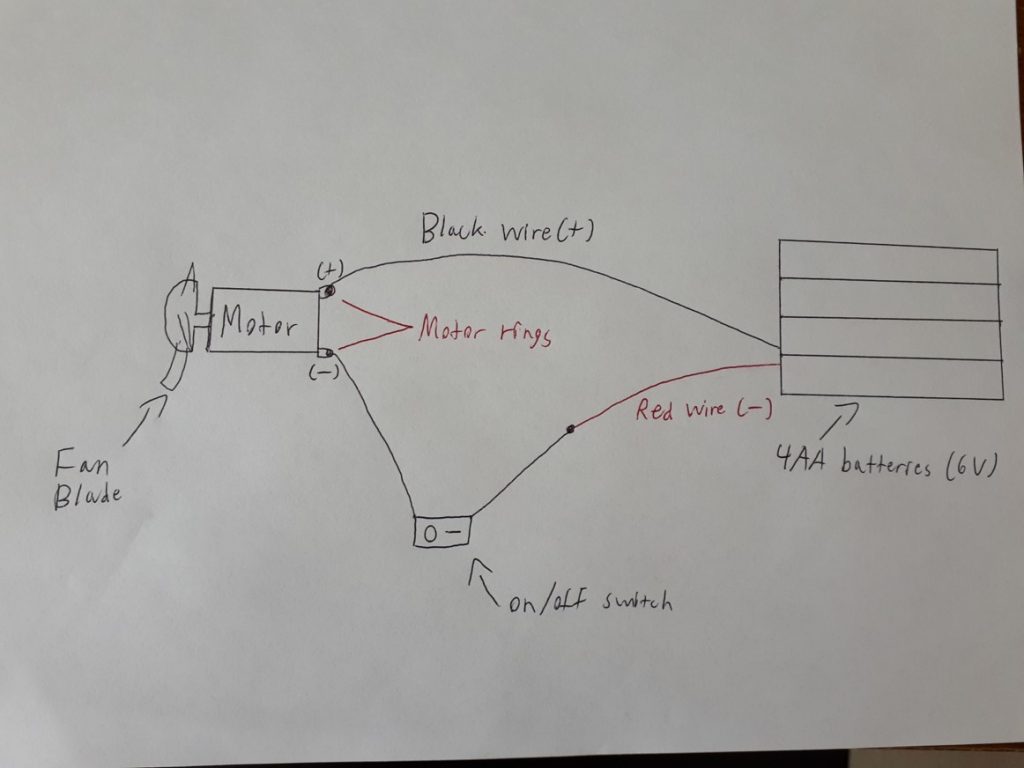
Figure 1. Diagram of the battery-powered fan
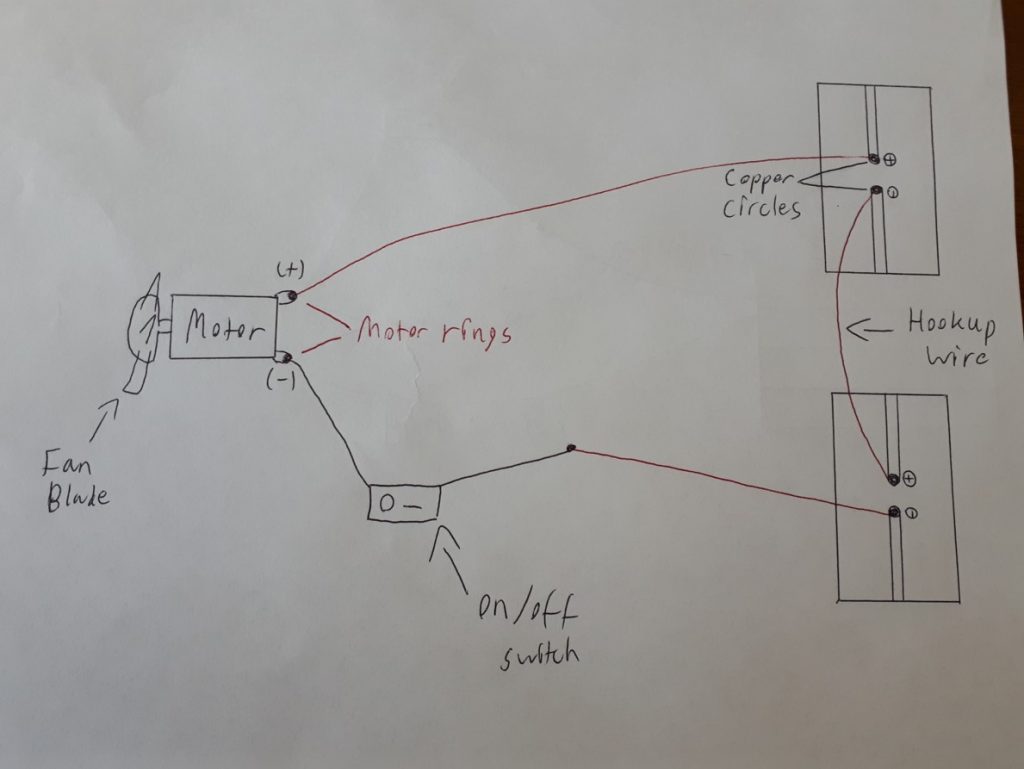
Figure 2. Diagram of the solar-powered fan
To prepare the experiment, a diagram of each fan was drawn. To build the battery-powered fan, all wires on a 4AA battery compartment (Amazon) and on/off switch (Amazon) were stripped about 1cm with a wire stripper. The 4AA battery compartment’s black wire was coiled directly onto the (+) motor ring of a DC motor (Uxcell – 6V 5800 RPM) and the red wire was coiled onto a wire of the on/off switch. Then, the other wire of the on/off switch was coiled onto the (-) motor ring. Finally, hot glue was used to glue a fan blade (Amazon) to the motor and four brand-new AA batteries (Duracell Quantum) were inserted into the battery compartment. The circuit would be controlled with the on/off switch.
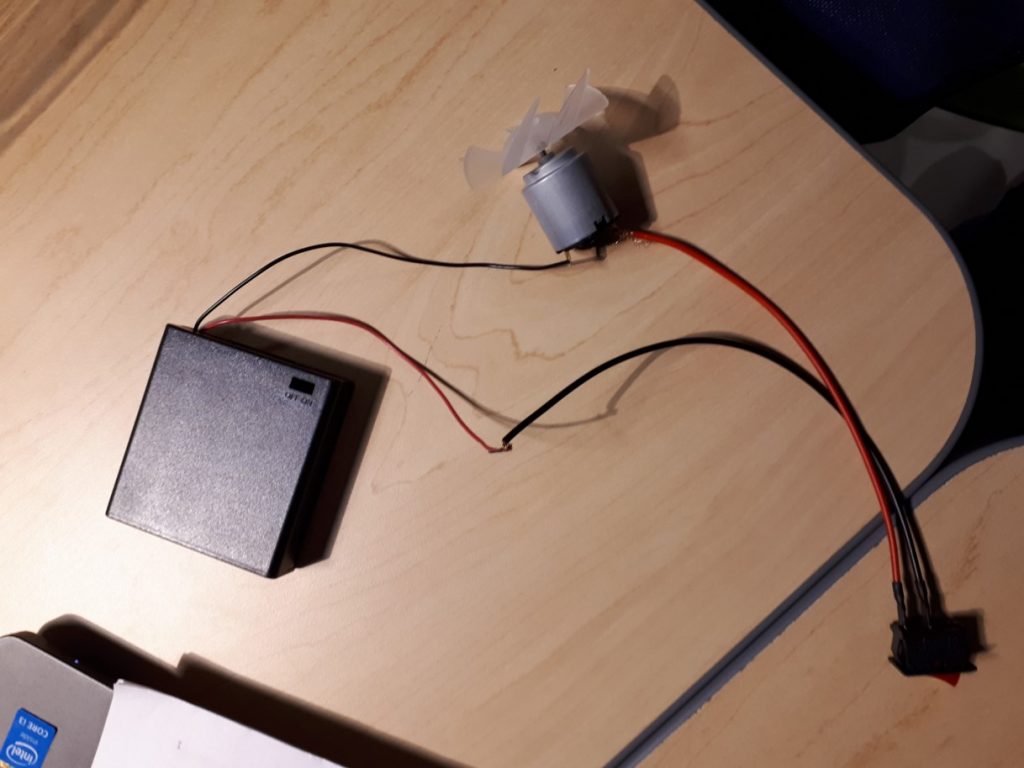
Figure 3. The complete battery-powered fan
For the solar-powered fan, all ends of three separate hookup wires (22-gauge tin copper alloy) and an on/off switch were stripped 1cm using a wire stripper. Two solar panels (Uxcell DC 6V 1W) were laid down side-by-side and both ends of one hookup wire were shaped into circles and soldered on the appropriate copper circles (+/-) of the solar panels using lead-free solder (srw-lf-080-500). For the remaining hookup wires, only one end was shaped into a circle and was soldered onto one of the remaining copper circles of either solar panel. Afterwards, one of the hookup wires was coiled directly onto a motor ring of the same charge. The other hookup wire was coiled with a wire of the on/off switch and its other wire was coiled onto the proper ring of the DC motor. Finally, hot glue was used to glue the fan blade to the motor.
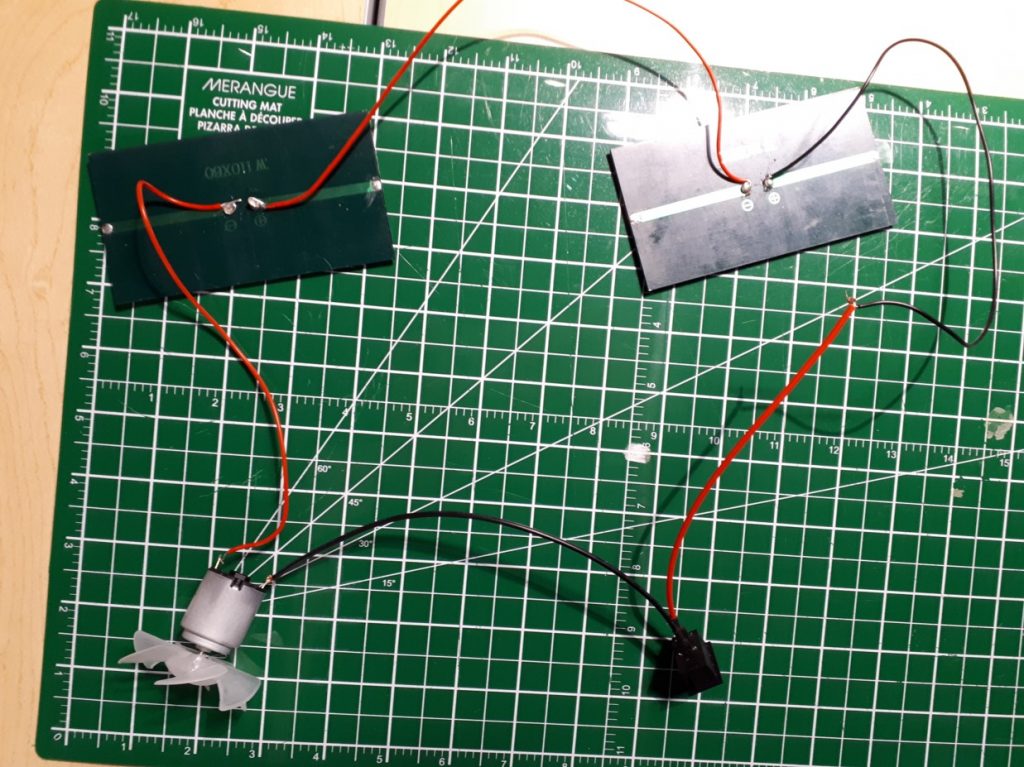
Figure 4. The complete solar-powered fan
Testing
Initially, the rotation speeds of both fans were to be measured qualitatively by recording them on a mobile phone which would be used as data to compare the two energy sources. However, there were several mishaps while trying to get the solar-powered fan to run and the qualitative measurement method was not an ideal approach as a mobile phone camera did not shoot enough frames per second to catch every little movement of the fan blades. Thus, an alternative testing method had to be planned.
For the alternative testing method, a multimeter was used to measure the voltage produced from both fans prior to running them. After setting the multimeter to 20V, its two probes were placed on the motor rings of the appropriate charges (+/-) and the voltage readings were recorded down. The battery-powered fan was run with a 4AA battery compartment as well as 2AA, 3AA, 6AA, and 8AA battery compartments. Voltage measurements were taken for each and the rotation speed of the fan blade among different compartments was compared qualitatively.
The solar-powered fan was tested under the FSL light. As the fan didn’t run, voltage measurements were taken at different points in the circuit: at the motor rings, the coiled point between the hookup wire and the on/off switch wire, and at the copper circles of the solar panels. This was to ensure the voltage from the solar panels was reaching every point in the circuit all the way to the motor rings. This was repeated multiple times while also troubleshooting by changing the build of the circuit. At the end, the fan was taken out into the sun and tested as lighting may have been a possible factor in its disfunction.
Results
The battery-powered fan ran in every trial rendering all tests successful; the circuit was functional with 2AA, 3AA, 4AA, 6AA, and 8AA with each AA battery being 1.5V. As expected, the fan rotated faster with more batteries powering it. Essentially, the higher the voltage, the faster the rotation of the fan blade. What was interesting, however, was that although four AA batteries would be at most 1.5V x 4 = 6.0V, the multimeter measured 6.41V. All other trials showed a similar behavior in voltage – slightly higher (+0.20~0.50) than initially calculated.
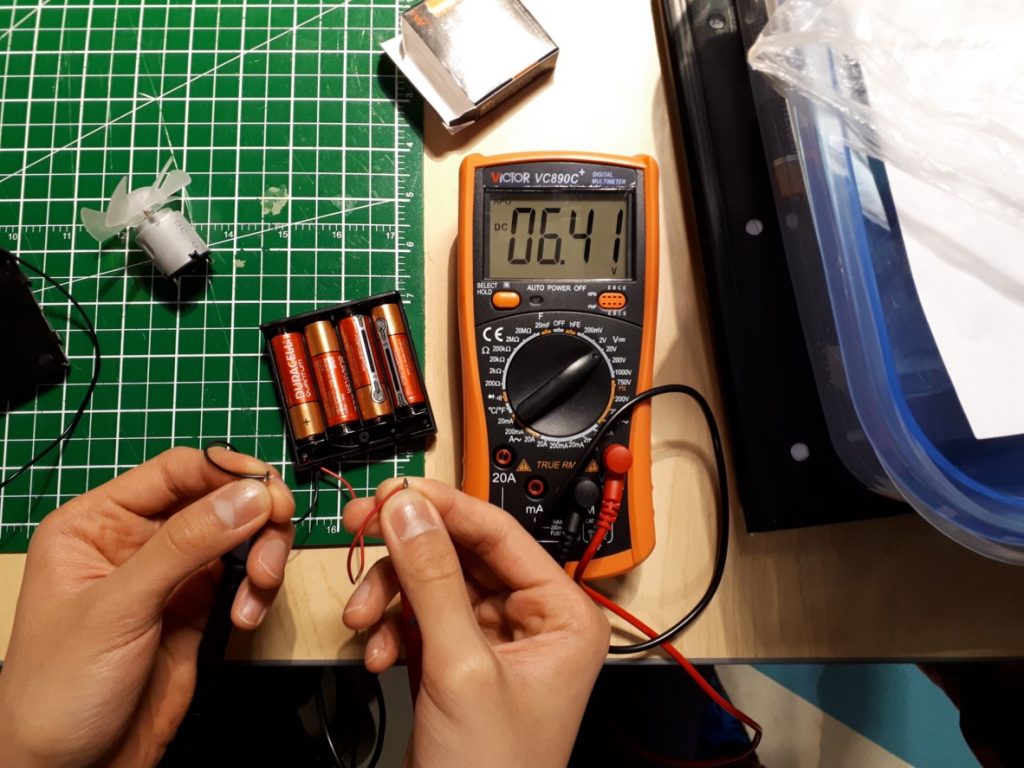
Figure 5. Four AA batteries measured to have a total voltage of 6.41V
Unfortunately, the solar-powered fan did not work despite altering the circuit several times and checking if the hookup wires were soldered together properly.
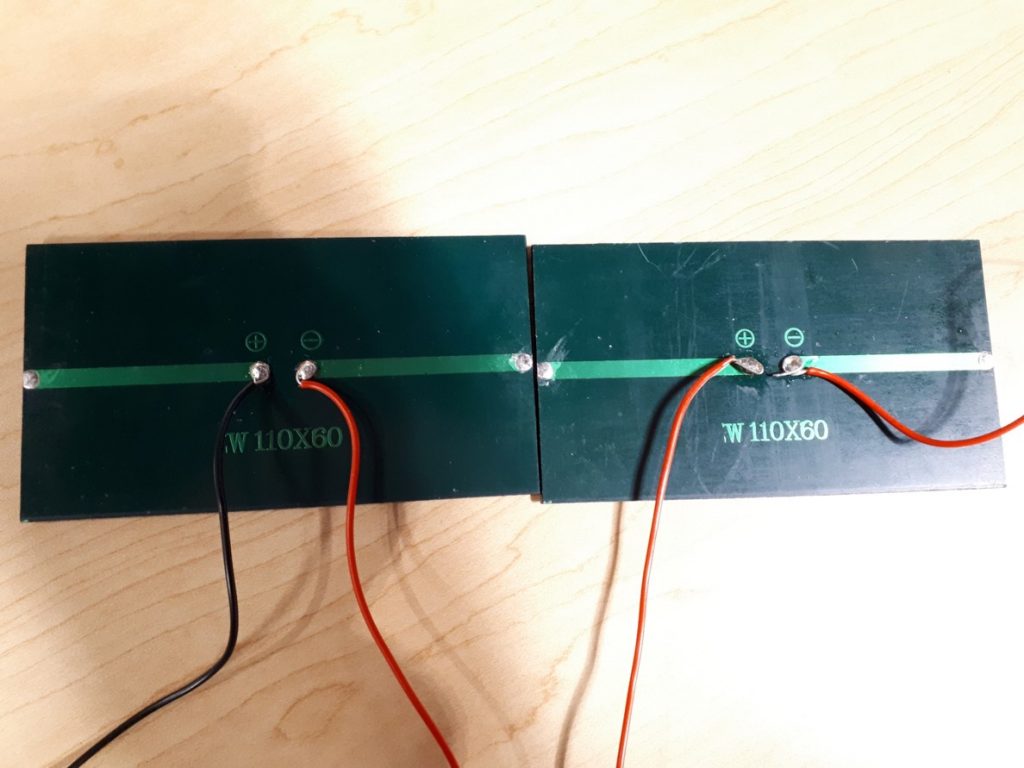
Figure 6. The solar panels were connected in this way and were functioning properly as the multimeter produced a voltage reading when both wires were placed on the probes.
Under the FSL light, the two solar panels produced a combined voltage of 7.16V with each solar panel being 6V. The multimeter read 0.00V when both probes were placed on the motor rings. However, it read 7.16V when one of the probes was moved down to the coiled connection between the hookup wire and on/off switch wire. The on/off switch was removed from the motor ring and the hookup wire was coiled directly on the motor ring as the voltage was reaching the end of the hookup wire. By doing this, the motor should run since it would be receiving the voltage produced by the solar panels through both hookup wires. Counterintuitively, the motor still did not run and the multimeter read 0.00V when the probes were placed on the motor rings.
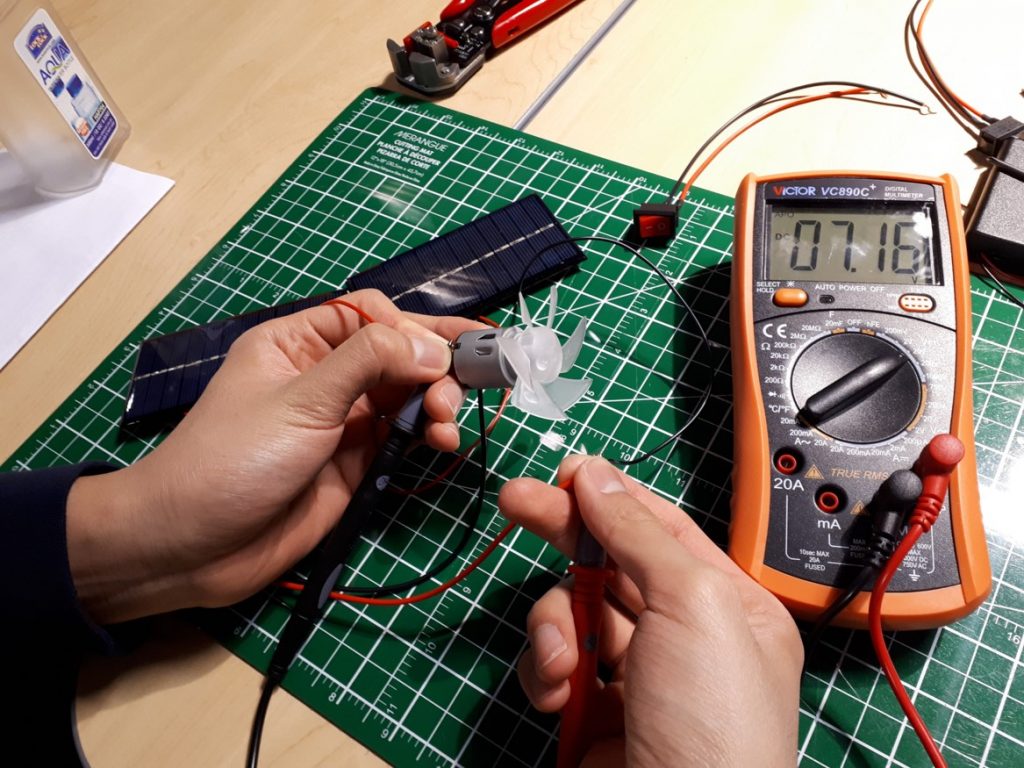
Figure 7. When the voltage was measured at the (+) motor ring (left hand) and at the coiled connection between the on/off switch wire and the (-) hookup wire (right hand) a voltage reading was produced on the multimeter.
Eventually, the solar-powered circuit was taken out into the sun in partly cloudy weather. Two voltage measurements were taken. Facing away from the sun, the voltage was 13.27V ± 0.01. Facing towards the sun, the voltage was 13.56V ± 0.01. This is the same behavior in voltage as the batteries as two 6V solar panels would be at most 6V x 2 = 12V but the voltage measurements are slightly higher than this calculation. Despite the high voltage achieved, the fan still did not run.
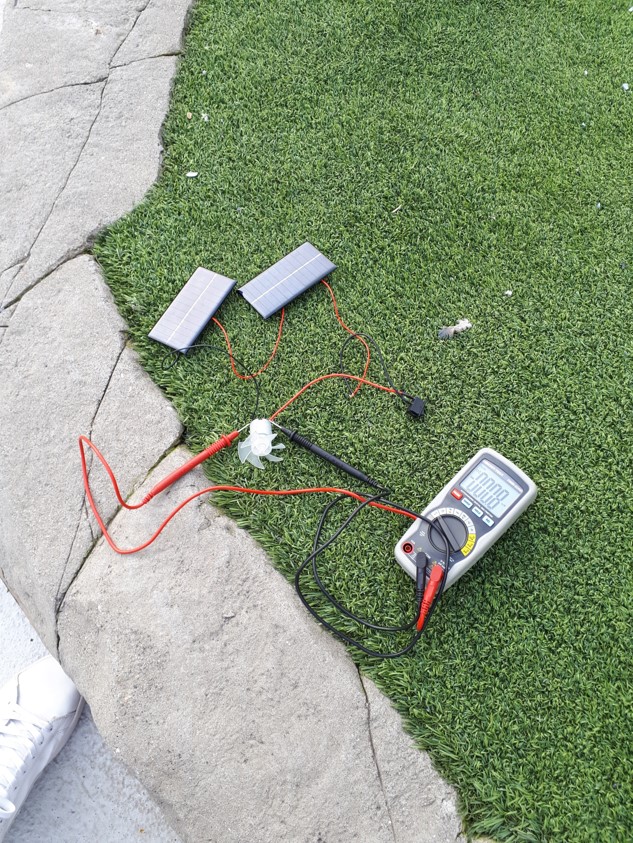
Figure 8. Testing setup of the solar-powered fan

Figure 9. The voltage measurements of the solar-powered fan were taken under these light conditions.
Tables
Tables showing the results of the battery-powered fan and solar-powered fan:
![Text Box: [Table 1 image]](https://www.futurescienceleaders.com/wp-content/uploads/2020/07/Table-1-2.png)
![Text Box: [Table 2 image]](https://www.futurescienceleaders.com/wp-content/uploads/2020/07/Table-2-2-1024x349.png)
Discussion
This study is not conclusive from the results obtained but they suggest that batteries and solar panels have similar voltage production. Even at their maximum energy capacity, with brand-new batteries and solar panels placed under bright sunlight, both energy sources’ voltage measurements were slightly higher than their initially calculated maximum. However, the major difference in the performance of these two energy sources was that the batteries successfully made the fan run every time while the solar panels resulted in a complete disfunction, indicating that the batteries successfully transmitted their voltage all the way to the motor while the solar panels failed to do so despite successfully transmitting voltage up to the ends of the hookup wires. Therefore, it can be suggested that batteries outperform solar panels in reliability with their ability to better power a small device.
Since this research was done on a small scale, with only a single variation of both energy sources, a wider range of products and a better testing method would be required before making concrete conclusions. Moreover, there were a multitude of systematic errors that occurred during this study, mostly with the solar-powered fan. Ultimately, it was unclear why the solar-powered fan wasn’t functional but there was certainly no connection issue as the voltage from the solar panels were being transmitted through the hookup wires. It was also confirmed that insufficient light/voltage wasn’t an issue as the motor still didn’t run in the bright sun.
Therefore, the most plausible cause is the material of the hookup wire. With the battery-powered fan, the battery compartment’s wires were copper, a pure metal, which is a very good conductor. Whereas, the hookup wires used in building the solar-powered fan were made out of tin copper alloy. Alloys tend to be less conductive than pure metals (Dotson, 2018) so the hookup wires may not have been sufficiently conductive to deliver all the voltage from the solar panels to the motor, serving as a possible explanation as to why the voltage of the circuit couldn’t be measured at the motor rings.
Although this study doesn’t provide a clear picture to sufficiently answer the research question, the results imply that it is still worth being investigated. Judging solely by the difference in the performances of the two fans, solar energy, for the most part, equals batteries in voltage production but has yet to outcompete them in terms of reliability which could be impacting its growth in the energy market as industries would opt for better power suppliers. A study reported by the MIT (Chandler, 2019) reveals that the solar energy sector has developed a mentality (Chandler, 2019) that solar cells must last at least 25-30 years to be “economically viable”, or cost-effective (Chandler, 2019). This is preventing new, innovative, and enhanced solar cells from breaking into the market (Chandler, 2019) which come with several improvements (Chandler, 2019) including higher efficiency (Chandler, 2019). They last only 10-15 years (Chandler, 2019) but have been shown to be more cost-saving (Chandler, 2019). Therefore, the solar energy industry may be playing a bigger factor in its slowing growth rather than solar energy’s limitations such as efficiency, capacity factor, voltage production, and reliability. The situation is different, however, in developing countries where they embrace solar energy (Shahsavari and Akbari, 2018). In these impoverished places, poverty, health, and environmental issues stem from an “increasing energy demand”. (Shahsavari and Akbari, 2018) This has been aggravated by fossil fuels (Shahsavari and Akbari, 2018) and other pollutive energy sources (Shahsavari and Akbari, 2018). Consequently, solar energy has been a popular solution (Shahsavari and Akbari, 2018) to reducing emissions, decreasing demand for fossil fuels, and resolving health issues in such countries (Shahsavari and Akbari, 2018).
Future research that could be conducted following this study would be comparing batteries and solar energy using a wider range of products and an effective testing method to evaluate their performance in powering a small device which can be a fan just like this study. By getting the fans running with their energy sources under ideal conditions and measuring their RPM (rotations per minute), it would provide feasible, quantitative results for comparison. After doing so, it is likely we will obtain a concrete, definite conclusion which will help determine whether or not solar energy is more economically viable and reliable than batteries in times when energy demand is at an all-time high and the implementation of clean, renewable energy is needed more than ever.
References
“About Renewable Energy.” Natural Resources Canada, Natural Resources Canada, 13 Dec. 2017, www.nrcan.gc.ca/energy/energy-sources-distribution/renewables/about-renewable-energy/7295#solar.
Bates, Mary. “How Does a Battery Work?” MIT Engineering, MIT, 1 May 2012, engineering.mit.edu/engage/ask-an-engineer/how-does-a-battery-work/.
“BU-104a: Comparing the Battery with Other Power Sources.” Comparing the Battery with Other Power Sources – Battery University, batteryuniversity.com/learn/article/comparing_the_battery_with_other_power_sources.
Chandler, David L. “Study: Even Short-Lived Solar Panels Can Be Economically Viable.” MITei, MITei, 22 Nov. 2019, energy.mit.edu/news/study-even-short-lived-solar-panels-can-be-economically-viable/.
Dotson, J. Dianne. “What Is the Conductivity of Copper?” sciencing.com, 13 Apr. 2020, sciencing.com/conductivity-copper-6307070.html.
Mathiesen, Karl. “What Is Holding Back the Growth of Solar Power?” The Guardian, Guardian News and Media, 31 Jan. 2016, www.theguardian.com/sustainable-business/2016/jan/31/solar-power-what-is-holding-back-growth-clean-energy.
“Solar Energy.” SEIA, SEIA, www.seia.org/initiatives/about-solar-energy.
Urban, Rylan. “Efficiency of Solar Energy in Canada.” Energyhub.org, energyhub.org/efficiency/.
Shahsavari, Amir, and Morteza Akbari. “Potential of Solar Energy in Developing Countries for Reducing Energy-Related Emissions.” Renewable and Sustainable Energy Reviews, Pergamon, 2 Apr. 2018, www.sciencedirect.com/science/article/abs/pii/S1364032118301527.